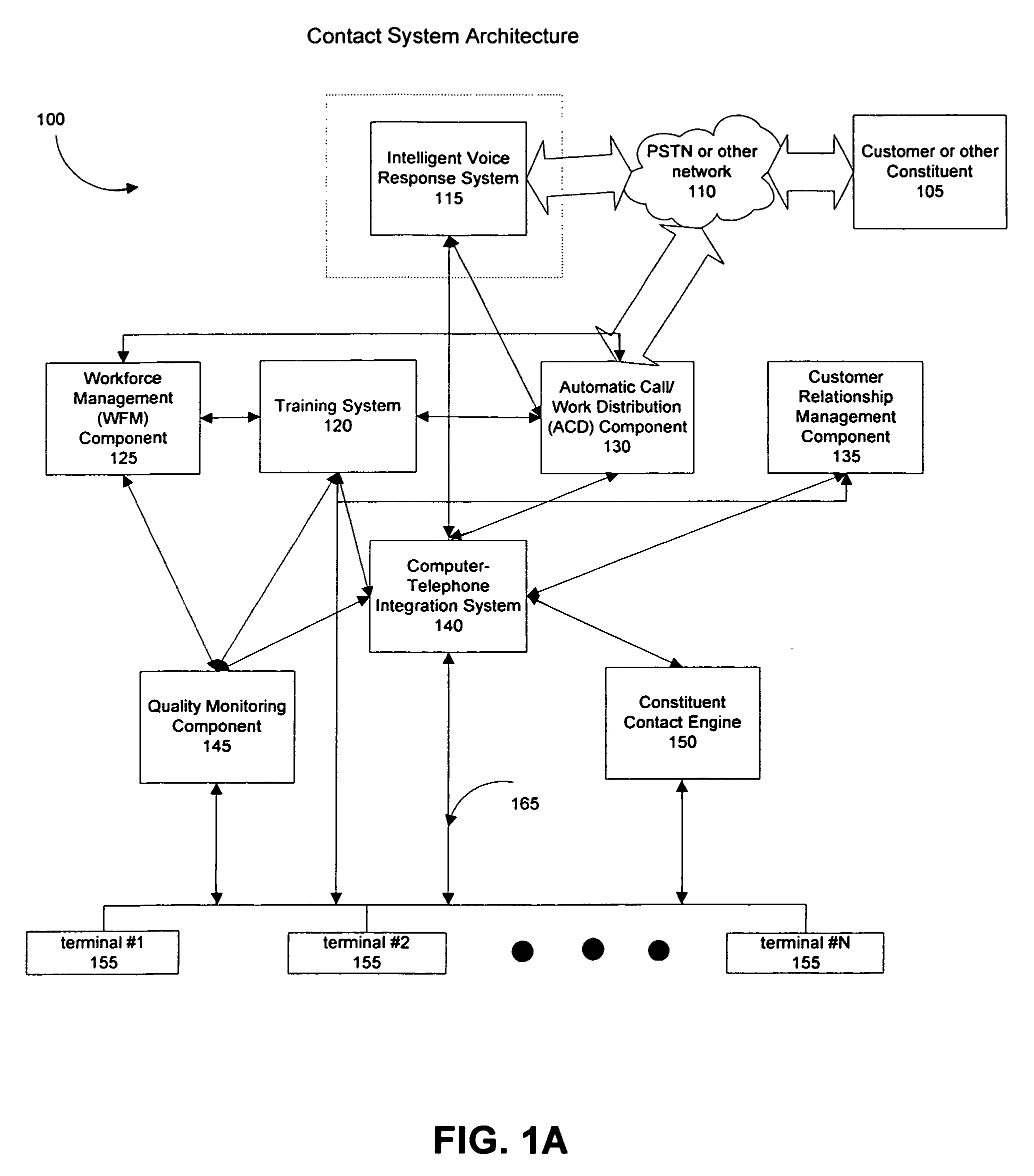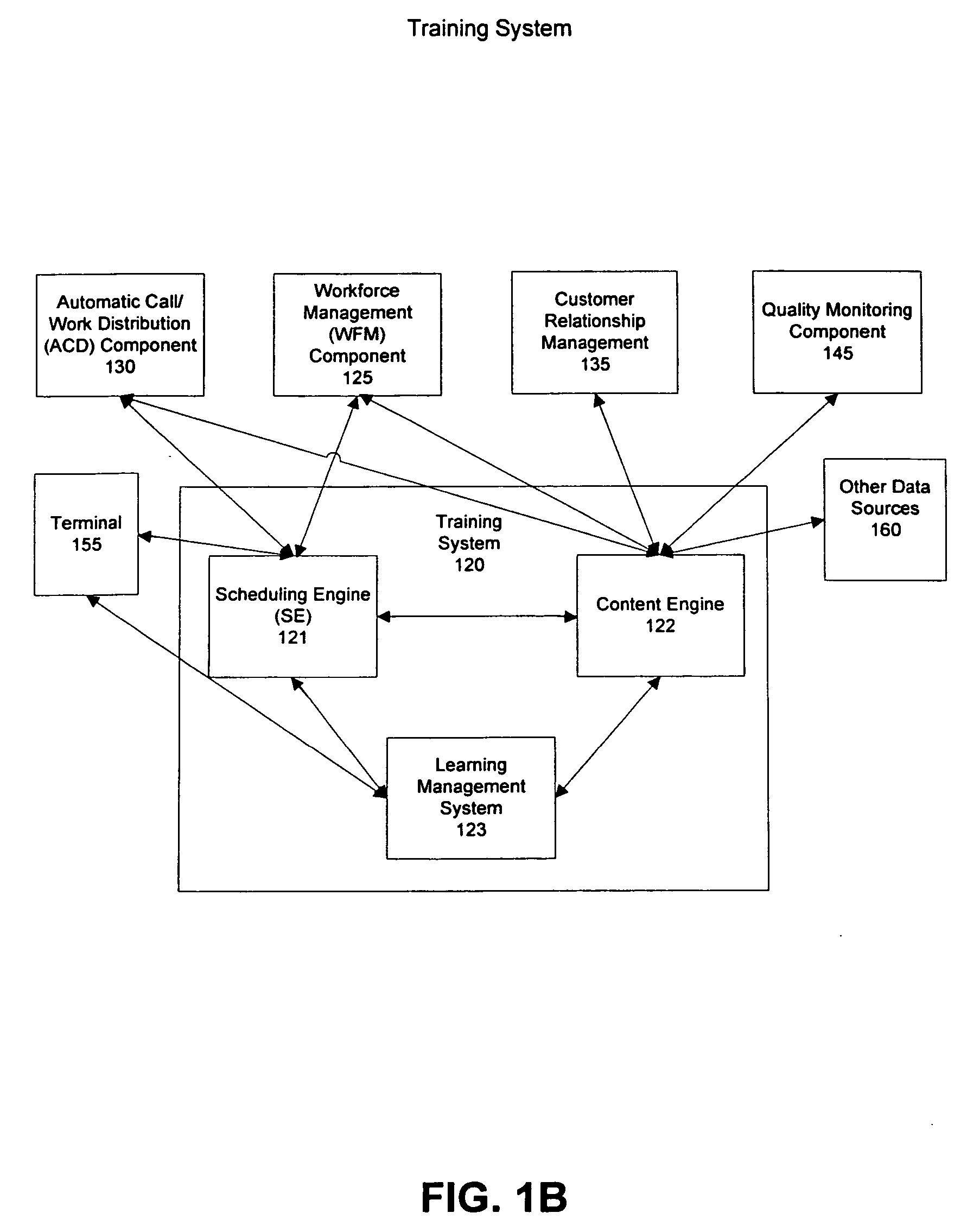System and method for increasing completion of training
a training and completion technology, applied in the field of call centers, can solve the problems of increasing workload, requiring agents to prematurely end or completely forego training breaks, and agents are often unable to complete training or other material provided during training breaks, so as to achieve the effect of enhancing skills and reducing workload
- Summary
- Abstract
- Description
- Claims
- Application Information
AI Technical Summary
Benefits of technology
Problems solved by technology
Method used
Image
Examples
Embodiment Construction
[0022] The present invention is directed to ensuring that agents maximize their access to training breaks to ensure that they are well-prepared to perform their jobs. Training breaks are time periods throughout the workday that agents can temporarily stop responding to constituents and instead, can receive information via the communications network. During the training breaks, training materials or other information, can be provided to a constituent contact agent, such as a call center agent. The information provided during training breaks can encompass training materials, schedules, work policies, notices, and any other information that can be transmitted over a communications network. Although the preferred embodiment of the invention will be described with respect to the scheduling of training breaks for an agent in a call center, those skilled in the art will recognize that the invention may be utilized in connection with the assignment of a variety of information and tasks in o...
PUM
 Login to View More
Login to View More Abstract
Description
Claims
Application Information
 Login to View More
Login to View More - R&D
- Intellectual Property
- Life Sciences
- Materials
- Tech Scout
- Unparalleled Data Quality
- Higher Quality Content
- 60% Fewer Hallucinations
Browse by: Latest US Patents, China's latest patents, Technical Efficacy Thesaurus, Application Domain, Technology Topic, Popular Technical Reports.
© 2025 PatSnap. All rights reserved.Legal|Privacy policy|Modern Slavery Act Transparency Statement|Sitemap|About US| Contact US: help@patsnap.com



